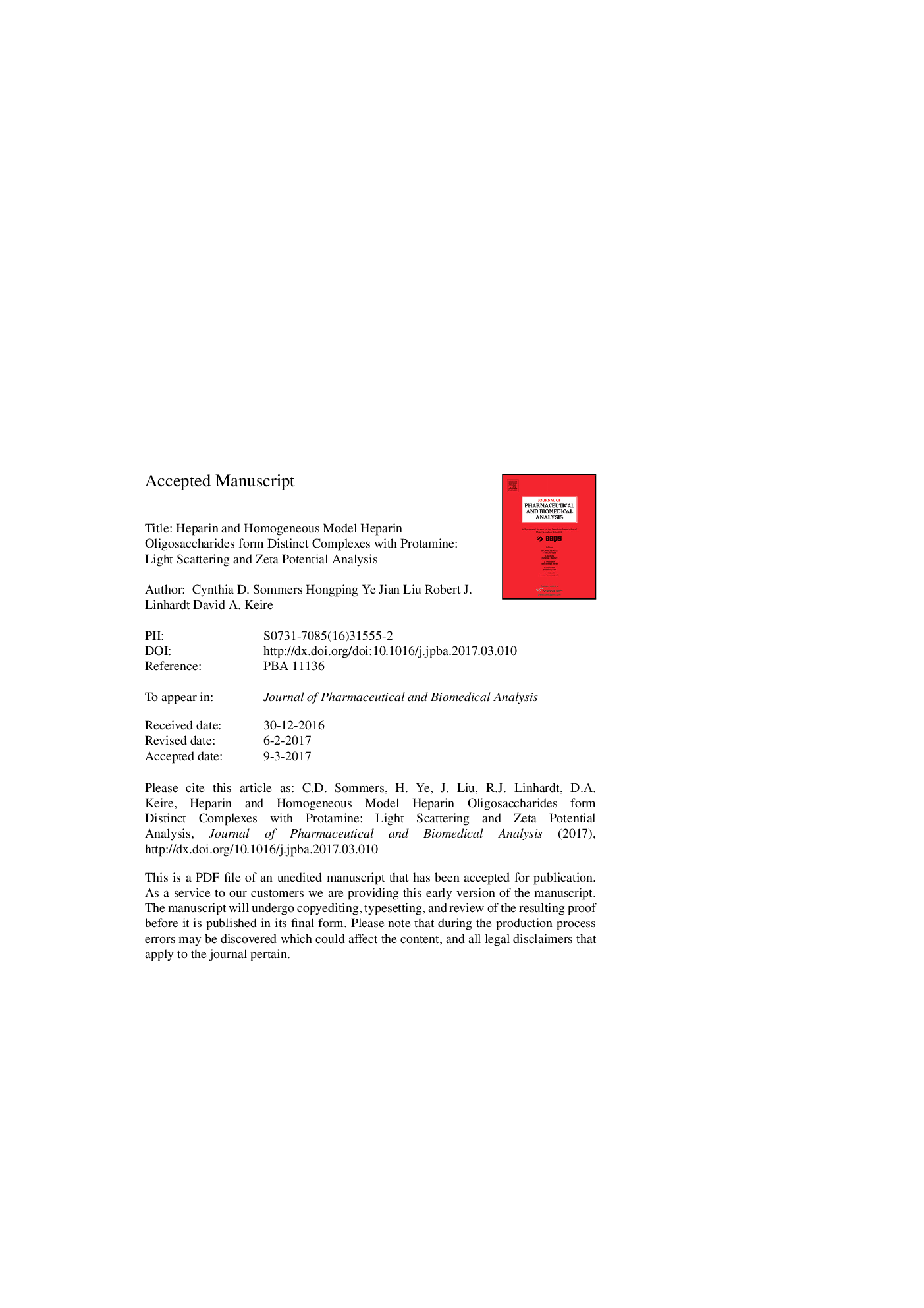| Article ID | Journal | Published Year | Pages | File Type |
|---|---|---|---|---|
| 5138012 | Journal of Pharmaceutical and Biomedical Analysis | 2017 | 36 Pages |
Abstract
Large multimolecular complexes of heparin with positively charged proteins such as platelet factor 4 (PF4) or protamine can initiate immune responses associated with heparin use in patients, including the most significant adverse event, heparin-induced thrombocytopenia (HIT). Current evidence suggests that platelet-activating antibodies that recognize large multi-molecular complexes (300-700Â kDa) of PF4 bound to heparin cause HIT [1] and in very rare cases anti-protamine-heparin antibodies can induce thrombocytopenia [2]. Heparin is administered as a mixture of sulfated glycosaminoglycans of variable lengths and sulfation levels. To date the potential impact of chain length, sulfation level and impurities on the formation, size and immunogenicity of heparin-protamine complexes has not been addressed due to the lack of purified, homogenous heparin chains for testing purposes. Here, a set of well-characterized model heparin oligosaccharides was used with protamine sulfate to evaluate the physicochemical properties of the resulting complexes. Hydrodynamic radii and zeta potential profiles of heparin-protamine complexes were observed to be dependent upon the sulfation location, size and concentration of the model heparin oligosaccharides. The well-characterized oligosaccharide-protamine complexes analyzed in this work will be useful for establishing links between heparin-protamine complex physiochemical attributes to their potential to illicit cellular immunogenicity.
Related Topics
Physical Sciences and Engineering
Chemistry
Analytical Chemistry
Authors
Cynthia D. Sommers, Hongping Ye, Jian Liu, Robert J. Linhardt, David A. Keire,
